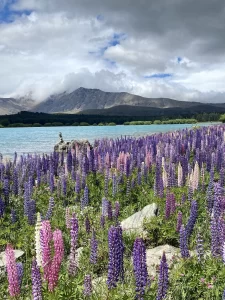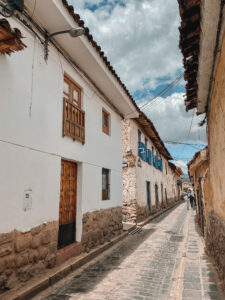Iceland is an incredible country to visit no matter what time of year. But if you’re looking for the best weather and all-around experience, visiting Iceland in June is the way to go. Here is a guide with everything you need to know about summer travel to Iceland, including average temperatures and a full packing guide!
Disclosure: Some of the links below are affiliate links. When you purchase through links on my site, I may make a small commission (at no extra cost to you!).
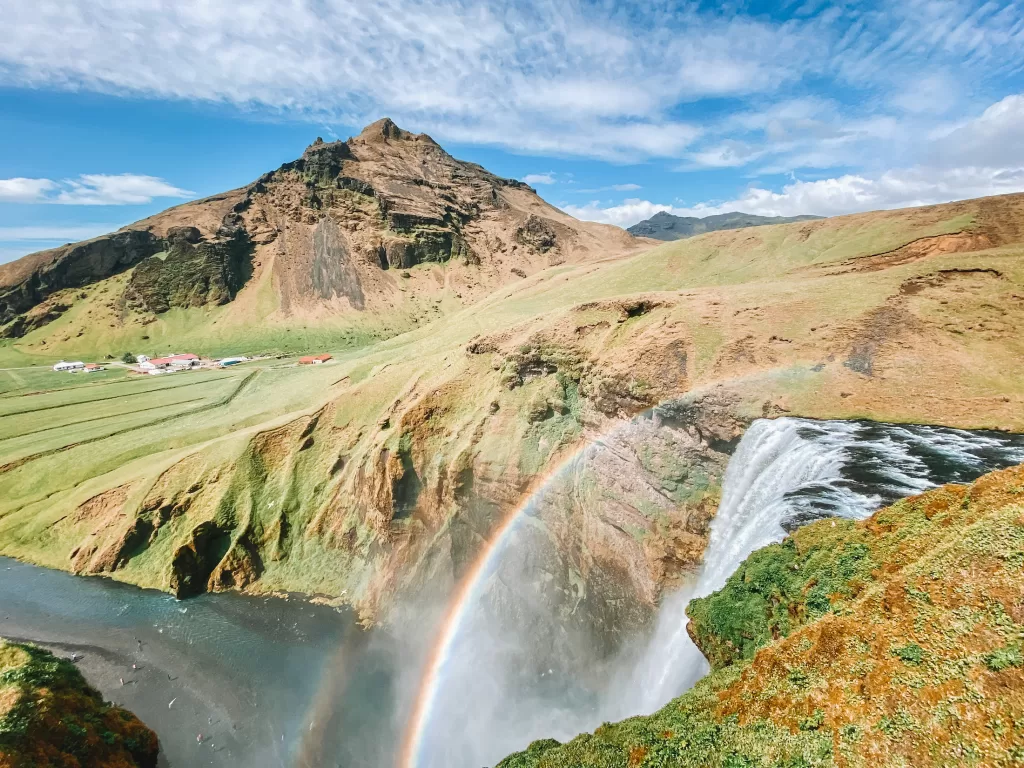
Iceland weather in June
How warm does Iceland get in June?
That can depend on where you are in the country!
In June, the average high temperature in the south of Iceland is about 12°C (54°F), while the average low hovers around 8°C (46°F). In the capital city of Reykjavik, it’s not unheard of to see a maximum temperature of around 25°C (77°F), especially on sunny days!
Northern Iceland doesn’t get as warm as the rest of the country, with daily high temperatures averaging around 11°C (52°F) in June. And if you venture into the Icelandic highlands, expect the weather conditions to change suddenly. You can get sunshine, rain, and snow, all in one day!
Temperatures can vary widely and it’s important to be prepared for both warm and cold weather (and everything in between!). It’s also worth noting that the weather in Iceland can be quite unpredictable — layering is definitely the way to go.
What is the hottest month in Iceland?
The single hottest month in Iceland is July, when the average daily high in Reykjavik is about 14°C (57°F).
Overall, the warmest months in Iceland are June, July, and August. The average temperature will be highest during the summer months, making them the best months to visit if you’re looking for milder weather.
Keep in mind that while daytime temperatures are comfortable, it will get significantly colder at night, regardless of the time of year.
How often does it rain in Iceland in June?
June is the driest month of the year in Iceland, with an average rainfall of 45 mm (1.8 in) in Reykjavik. The precipitation usually comes in the form of light rain, but it can also be snowy if you’re in the mountains. (Some Icelandic F-roads stay closed through late June because of the snow!)
Although June takes the cake for the least amount of rain, the summer months in general are an ideal time to visit if you want to avoid rainy days as much as possible. The shoulder season months of September and October are the wettest months in Iceland, with an average rainfall of 114 mm (4.5 in).
Daylight hours in Iceland in June
Because of its location north of the Arctic Circle, Iceland receives almost 24 hours of sunlight per day in the summer months. The sun doesn’t ever fully set — it just dips below the horizon. This natural phenomenon, known as the midnight sun, is a really unique experience!
The opposite is true in the winter months. Iceland’s high latitude means that the country gets just over 4 hours of sunlight per day.
If you’re visiting Iceland in June, you can expect between 21 and 24 hours of full-on sunlight per day. The summer solstice, also known as the longest day of the year, also occurs in late June. On that day, the country gets exactly 24 hours of daylight — whew!

Pros of visiting Iceland in June
Midnight sun
The long days provided by the midnight sun allow for more time for activities such as hiking and sightseeing. When the sun never sets, there’s no urgency to get home before dark. This can be especially useful for tourists who want to make the most of their time in Iceland!
It’s also a unique natural occurrence that isn’t found in many other places in the world. How many people can say that they’ve seen the sun still up at 11 o’clock at night? It’s fun, it’s quirky, and it’s definitely bizarre.
If you want to take advantage of the long daylight hours in June, midnight sun tours are a great option. There’s no better time to go whale watching or take an ATV tour than in the middle of the night, am I right?
Better weather
The month of June is a great time to visit if you want (relatively) warm days. With average high temperatures of around 12-14°C (54-57°F), less rain, and longer days, the weather forecast is more likely to be pleasant.
Of course, if you’re looking to participate in winter sports like cross-country skiing, snowmobiling, or snowboarding, June would not be a good time to visit. Despite its name, Iceland’s climate is warmer than you would expect in the summer!
Puffins
Iceland is the puffin-watching capital of the world, and June is the perfect time to see them when they come ashore to lay their eggs and raise their young! These cheeky little birds can be spotted from late May through early August, when they return back to the sea.
The best place in Iceland that I’ve found to see Atlantic puffins is Borgarfjörður Eystri in East Iceland. Seeing hundreds of puffins waddle around and dig into their burrows is a really amusing (and special) sight to see.
Other places to spot puffins in Iceland include Dyrhólaey in South Iceland, the Tjörnes Peninsula in North Iceland, and Hornstrandir Nature Reserve in the Westfjords.
Campsites are open
If you’re trying to travel Iceland on a budget, you’ll definitely want to stay in campsites instead of hotels. While some campsites are open year-round, many are only open in the peak season. These sites will open in late May or early June to capitalize on the additional tourists.
Visiting Iceland in June is a safe bet if you want to have a greater number of accommodation options during your road trip.
Lupins are in bloom
Like in New Zealand, colorful pink and purple lupins are in full bloom in the warmer months.
You can find these pretty flowers basically everywhere — on the side of the road, in open fields, and near standing water. They’re particularly abundant around the Golden Circle Route, the Snaefellsnes Peninsula, and the South Coast.
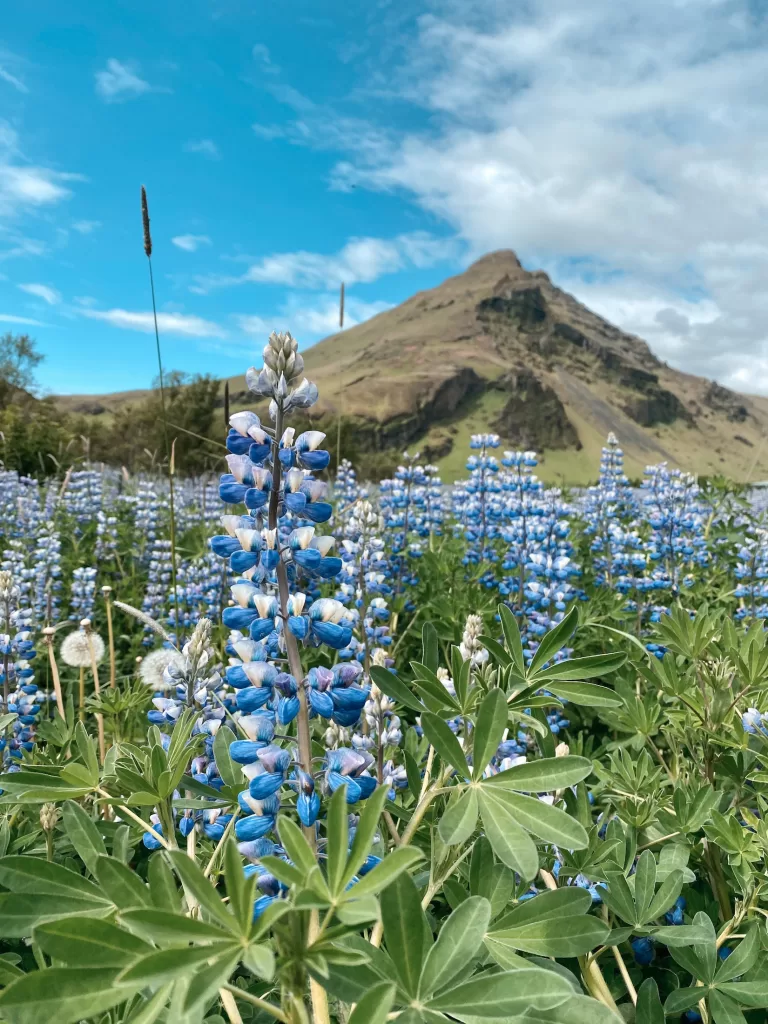
Cons of visiting Iceland in June
Peak season
June is the beginning of peak tourism season in Iceland, so flights and hotels will be more expensive than in the winter months and shoulder seasons.
Additionally, tours, rental cars, and hotels may book out well in advance. If you’re visiting Iceland in the summer, it would definitely pay to make bookings as soon as you can to avoid disappointment.
Some roads might not be open yet
Believe it or not, some rural mountain roads in Iceland stay closed well into June (and even July!) because of snow and ice.
If you’re only planning on traveling around the Ring Road, you shouldn’t have a problem. But if you want to head into the Icelandic highlands (which I highly recommend), you’ll need to check the status of the road openings before you go. Road.is is a great resource to see when each F-road is expected to open.
Difficulty sleeping
While the midnight sun is great for sightseeing, it’s not so great when you actually want to sleep!
Keeping a regular sleeping schedule when the sun never stops shining is tough. It’s easy to lose track of time and accidentally stay up way too late.
(And then once you’re actually in bed, it can be hard to fall asleep because of the bright light!)
To get a better night’s sleep, try to choose hotels or campervans with blackout curtains. If the light is still peeking through, a sleep mask should do the trick.
No Northern Lights
If you want the best chance of seeing the Northern Lights, or Aurora Borealis, June in Iceland is not a great time to visit.
The best time to see the Northern Lights is during the darkest part of the year, also known as winter. The midnight sun in June makes it difficult for the sky to get dark enough to see the lights in their full glory.
Technically, it is still possible to see the Northern Lights in the summer, especially if there’s a strong solar storm. To increase your chances of seeing them, it’s best to go to a location away from city lights and to try to go on a clear night when the moon is not full.
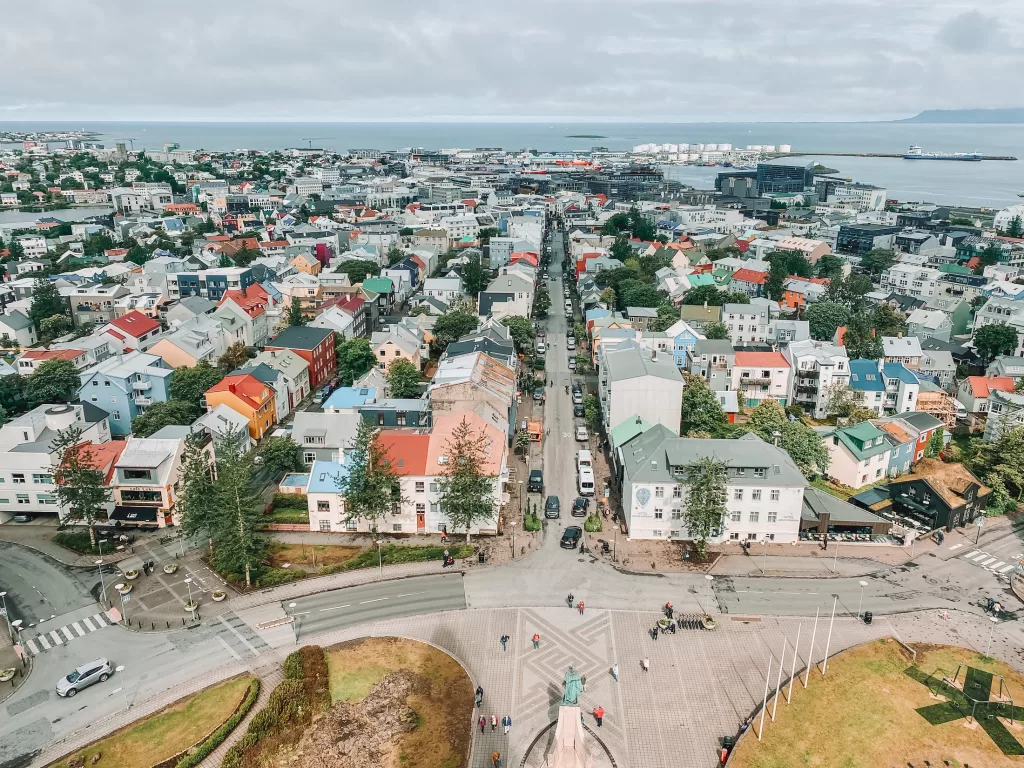
Iceland in June packing list
The scenery in Iceland is otherworldly, making it an especially great place to visit if you’re into hiking. This Iceland in June packing guide is tailored to those who will be doing a lot of sightseeing and outdoor activities.
All of these things should fit nicely into a carry-on bag as well — woohoo!
Clothing
- 2-3 light base layers: These would include athletic short- and long-sleeve tops. The idea is that you can layer on top if it’s cold or strip down if it’s warm!
- 2 heavier sweaters: Turtlenecks, wool jumpers, and fleece pullovers are the best things to have, even in the warmest months.
- 1 puffer jacket: Look out for an easily packable one.
- 1 rain coat: Probably my most-worn item of clothing in Iceland! Weather conditions in the month of June can change dramatically at a moment’s notice, so having a rain jacket packed away is key.
- 2 pairs of leggings: A travel essential.
- 1 pair of waterproof pants: Look for lightweight ones rather than fleece-lined for the summer.
- A few hats: At the very least, one beanie and one baseball cap are handy to have.
- A pair of gloves: Ones with conductive material on the fingers are great so you can still use your phone or camera.
- 4 pairs of socks: Merino wool socks are the best for keeping your feet warm and cushioned. Plus, you can rewear them a few times before they start to smell (a backpacker’s dream come true).
- Waterproof hiking boots: Waterproof being the key word here! You’ll regret not having waterproof boots the minute you encounter a boggy track.
- Lightweight hiking sandals: I love a good pair of Teva sandals for those warm days where you can’t be bothered wearing real boots.
- A swimsuit: We can’t forget about Iceland’s numerous geothermal pools! A swimsuit is a necessity for visiting the popular Blue Lagoon.
Electronics
- A tripod: An absolute essential for taking great pictures while solo traveling.
- Drone: Super fun, great for aerial photography, and there are tons of safe and private places to fly in Iceland!
- Power bank: These are especially great for backpacking and/or camping! I solely relied on one to charge my phone at night in my car’s pop-up tent.
- US-to-Europe plugs: This will make your life so much easier — it has one outlet plug and 2 USB holes.
Other
- An eye mask: To give you a better chance of falling asleep with the midnight sun! These are also great for long-haul flights.
- Sunglasses: Despite the common cloud cover, sunnies are essential when visiting Iceland in the summer.
- Hiking poles: Not 100% necessary, but can be super helpful when going for hikes after it rains and gets muddy. (Side note — these can only go in checked baggage!)
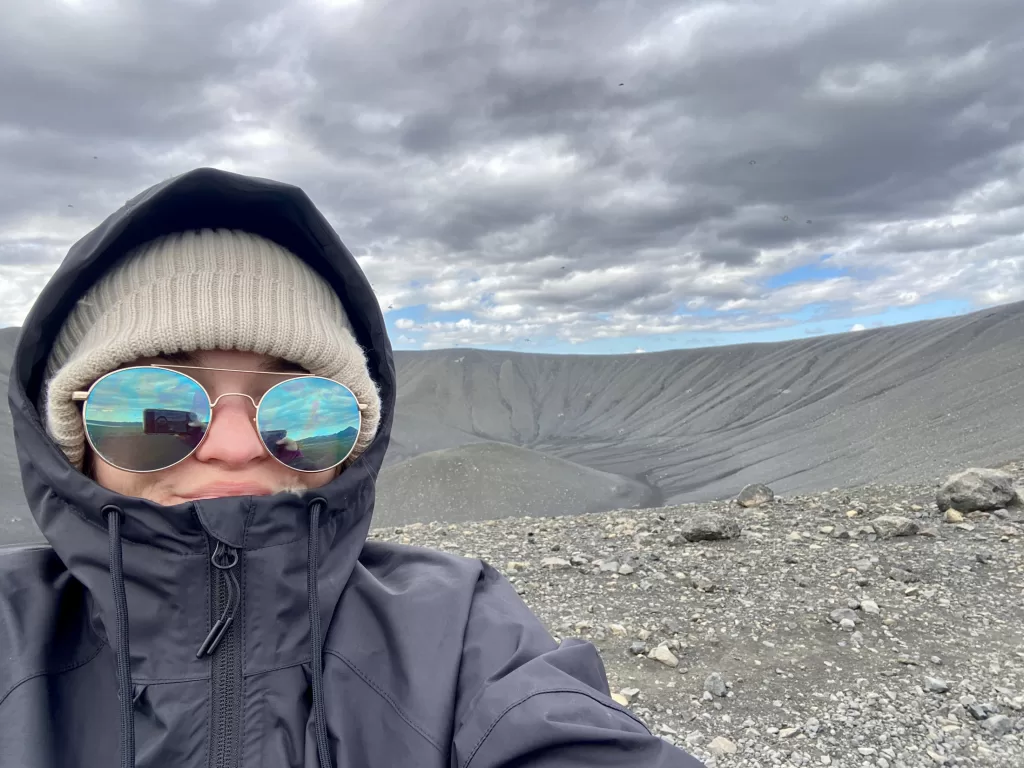
Iceland in June FAQ
Does it snow in Iceland in June?
It’s possible for it to snow in Iceland in June, although it’s definitely unlikely. You’ll probably see some snow on the mountains (especially at higher elevations), but experiencing actual snowfall is not common.
Iceland is known for its unpredictable weather, and it’s possible to experience all four seasons in a single day. In general, the weather in Iceland in June is mild, with average temperatures ranging from around 10-14°C (50-57°F).
However, it’s not uncommon for there to be some rain and wind, and the weather can change very quickly. It’s a good idea to pack for a range of weather conditions and to be prepared for the worst.
Can I swim in Iceland in June?
You can technically swim in Iceland in June, although the water will be freezing!
Iceland is known for its geothermal pools and hot springs, which are popular places to swim all year round. The water in these pools is usually heated by geothermal energy, which makes it warmer than the surrounding air. Even in the warmest geothermal pools, though, the water is usually only around 25-30°C (77-86°F).
If you’re planning to swim in the ocean, the water will be even colder, so you will definitely want to bring a wetsuit.
Is June or July better for Iceland?
Both June and July can be good times to visit Iceland because both months offer long days and relatively mild weather.
In June, the days are long, with the sun setting around midnight and rising again around 3:00 AM. This can be a great time to take advantage of the long daylight hours and go on extended hikes or drives.
July is also a good time to visit, as the weather is generally mild and there are many outdoor festivals and events. It’s worth noting that July is fully peak tourist season in Iceland, so you may find that prices for flights and accommodation are higher and that there are more crowds at popular attractions.
Recommended tours in Iceland
You’ll also love:
- Kotor Travel Guide: Montenegro’s Medieval City With a View
- How Much Does an Iceland Trip Cost? My 12-Day Budget Breakdown
- One Day in Frankfurt, Germany: A Complete 24-Hour Itinerary
Thanks for reading this guide to Iceland in June!
xoxo Niki

